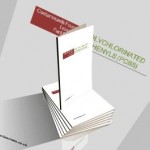Trace Contaminants Found in Leachate: Fact Files for You to Download
 If you have a problem with a substance found in leachate, we are here to help you! Our fact files, which are based on publicly published UK government research, are unique. You can save huge amounts of time hunting down this information which is otherwise spread very widely in published papers in libraries and on research databases, and is only partially accessible from the web.
If you have a problem with a substance found in leachate, we are here to help you! Our fact files, which are based on publicly published UK government research, are unique. You can save huge amounts of time hunting down this information which is otherwise spread very widely in published papers in libraries and on research databases, and is only partially accessible from the web.
What Are Trace Contaminants?
Landfill leachate invariably contains a host of different substances in addition to the major substances present (COD, BOD, Suspended solids, Metals in solution, Salinity, Ammoniacal nitrogen etc), which although only dissolved in tiny quantities (parts per million (ppm) and parts per billion (ppb)) still may represent a potential hazard to the environment and public health due to their extreme toxicity. To make a distinction between much higher concentrations of the main contaminants which are present in parts per thousand and more, and these lower concentration but much more toxic substances, the term “Trace Contaminants” is applied.
National and international standards have been set for the maximum permissible concentrations of many of these toxic (or “dangerous”) substances in drinking water, and under the EU Groundwater Directive no such substances are in principle permitted to be discharged to groundwater. In the UK these substances are often described as List 1 Substances, however since the creation of that list many more substances and species of contaminants have beeen identified which can now be analysed, and routinely reported upon within the description of “Dangerous Substances” as now applied by the environment Agency (EA).
How Does a Person Tasked With Deciding Whether a Leachate Contains Significant Quantities of Trace Contaminants Find Out About Them?
The first step is to analyse for them. Contact your water quality analytical laboratory and request a list of the subtsances they analyse when asked to complete what are variously called “List1”, “Dangerous Substances”, “or Comprehensive Prescribed List” analysis reports. Before you head off to the landfill to collect the necessary samples you will also need to await a package of special bottles which te analytical laboratory staff will prepare and send to you. Some of the se bottles wil include fixitive chemicals designed to prevent decay of some substances while en-route to the analytical test laboratory.
OK. So the Analytical Report Showed Some Dangerous Chemicals to be Present at Trace Concentrations. Does it matter? What Now?
Most leachates, especially those from older landfills, will show the presence of some of these chemicals. The next step is to decide whether they present a real hazard when the discharge route is taken into account. To do that we are writing and publishing a series of Leachate Contaminant Fact Files, each one of which will discuss the nature of a hazardous substance, or species of substances, and identify research papers written on the contaminant, to assit the reader in deciding whether the presence of the substance is significant and assist them in the decision either to treat the leachate to remove the susbtance, or to make a scientifically based case to the regulatory body or waste water treatment plant operator that negligable risk exists from the dangerous chemical at the concentration seen during water quality analysis.
Our first Leachate Contaminant Fact Files are Now Available. For more information, and purchase for immediate download, please click on the linked text below:
